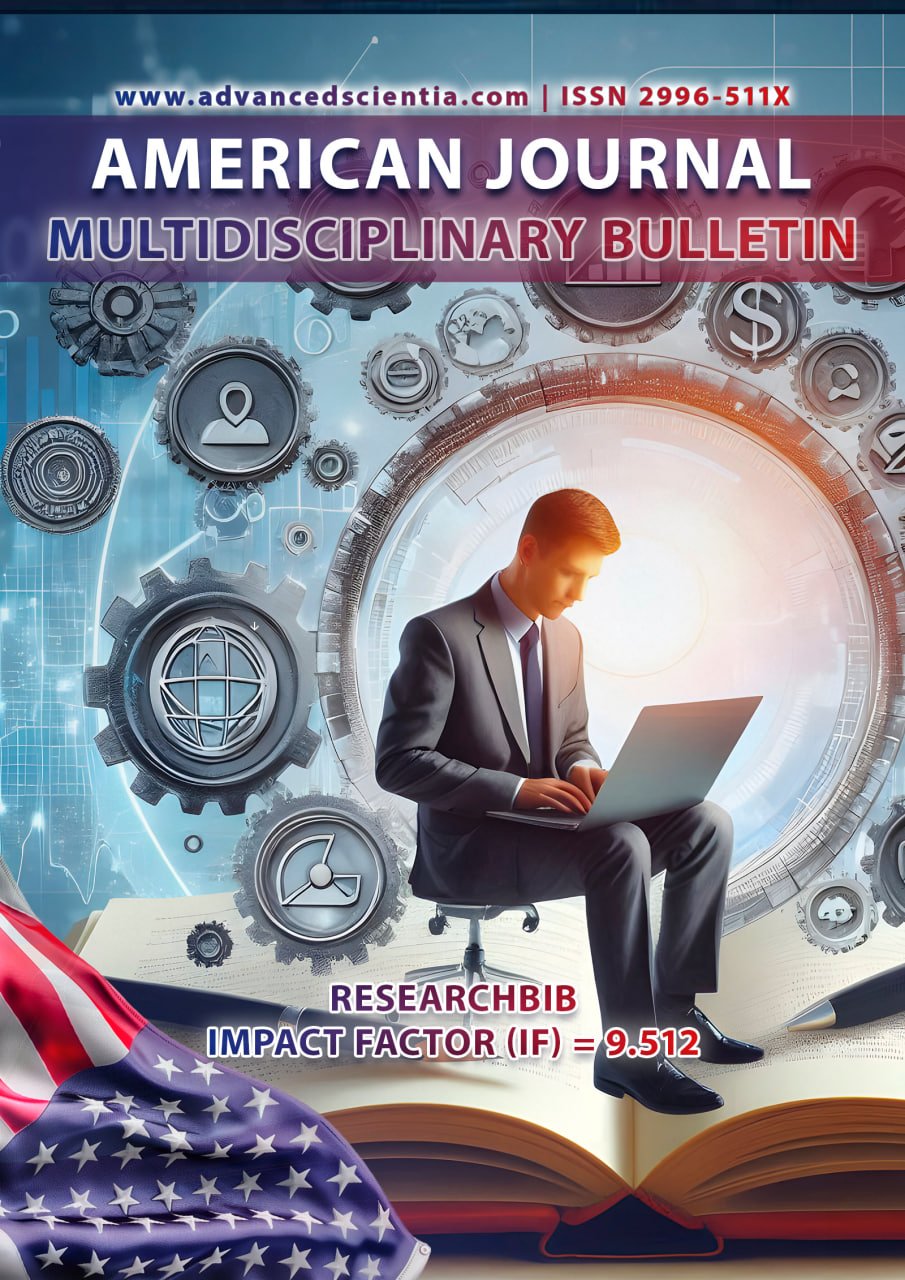ARTIFICIAL INTELLIGENCE AND CYBERSECURITY: A NEW ERA OF COLLABORATION
Abstract
In today’s interconnected world, Artificial Intelligence (AI) is rapidly transforming the landscape of cybersecurity. This article examines how AI is being applied to predict, prevent, and respond to cyber threats in real-time, as well as how malicious actors are exploiting AI to develop more advanced attacks. The paper explores key benefits of integrating AI into cybersecurity frameworks, identifies significant risks, and proposes balanced ethical considerations for future development. Ultimately, the research emphasizes the need for adaptive, explainable, and ethically-governed AI systems to ensure sustainable digital protection.
References
1. Russell, S., & Norvig, P. (2020). Artificial Intelligence: A Modern Approach. Pearson Education.
2. IBM Security. (2023). The Future of Cybersecurity: AI-Driven Defense Systems. Retrieved from: https://www.ibm.com/security
3. European Commission. (2024). AI Act Proposal for Trustworthy Artificial Intelligence.
4. Symantec. (2023). Internet Security Threat Report. NortonLifeLock.
5. NIST. (2023). AI Risk Management Framework. U.S. Department of Commerce.
6. Abdisoatov Og‘abek G‘ayrat o‘g‘li. Advantages and Disadvantages of Applying Artificial Intelligence in Military Service. Proceedings of the Republican Scientific-Theoretical Conference “Advantages, Challenges, and Solutions of Applying Modern Information and Communication Technologies in Education”. March 27, 2024.
7. Abdisoatov Og‘abek G‘ayrat o‘g‘li. Efficiency of Using Information Technologies in Management Activities. Held in accordance with Order No. 316 "On Holding a Scientific-Practical Conference", May 2, 2024. Proceedings of the Scientific-Practical Conference, June 5–6, 2024.
8. Abdisoatov Og‘abek G‘ayrat o‘g‘li. Technologies of Using Virtual Laboratories to Improve the Quality of Education in Engineering Fields. Proceedings of the International Online Scientific-Practical Conference, April 26–27, 2024.
9. N Khamrayev. (2022). The theoretical aspect of increasing the readiness of higher education teachers to use the virtual environment as an example of credit education. International Conferenceon Research in Humanities, 87-89
10. XN Zokir o’g’li. (2021). TA’LIMDA VIRTUAL REALLIKDAN FOYDALANISH SABAB, KAMCHILIK VA USULLARI. Elektron ta’lim, 52
11. PS Aliqulovich, XN Zokir o‘g’li. (2021). VIRTUAL REALLIK-O ‘QITISH USULI VA VOSITASI SIFATIDA. Elektron ta’lim, 63
12. НЗ Хамраев. (2023). AXBOROT TEXNOLOGIYALARI FANINI O’QITISHDA VIRTUAL TA’LIM TEXNOLOGIYALARINI JORIY ETISHGA OID ADABIYOTLAR TAHLILI VA METODLARI. Образование и инновационные исследования международный научно-методический журнал 6, 259-261.
13. Khamrayev Nodir Zokir Ugli. (2024). REASONS, DISADVANTAGES OF USING VR IN EDUCATION METHODS. European International Journal of Multidisciplinary Research and Management Studies 4 (05), 258-262.
14. KNZ Ugli. (2023). The Use of Virtual Reality Technology in Higher Education as a Method and Means of Teaching. Eurasian Research Bulletin 17, 151-156.
15. KNZ Ugli. (2023). THEORETICAL ANALYSIS OF THE MODEL AND MECHANISMS OF THE USE OF" VIRTUAL REALITY" TECHNOLOGIES IN THE EDUCATIONAL PROCESS. American Journal of Pedagogical and Educational Research 13, 53-58.
16. N Khamrayev. (2023). ADVANTAGES AND DISADVANTAGES OF TECHNOLOGIES FOR CREATING ELECTRONIC TUTORIALS IN TEACHING THE TOPIC OF VIRTUAL REALITY IN HIGHER EDUCATIONAL INSTITUTIONS. Theoretical aspects in the formation of pedagogical sciences 2 (5), 119-122.
17. KNZ Ugli. (2022). Theoretical Analysis of Enhancing the Readiness of Teachers to use Virtual Environment in Credit Education. Eurasian Scientific Herald, 51-54






















